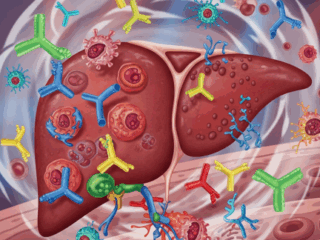
Menopause, once whispered about behind closed doors, has stepped into the digital era with a bold, tech-driven transformation. Today’s women are no longer left navigating midlife hormonal shifts without support. Instead, they are accessing streamlined, medically-backed solutions through menopause treatment platforms offering HRT, marking a significant departure from the impersonal and fragmented care models of the past.
This revolution didn’t happen overnight. It evolved at the intersection of technological innovation, changing attitudes toward women’s health, and a demand for personalization. The result? An ecosystem where hormonal therapy is not only accessible but also deeply integrated into digital health management.
From Stigma to Empowerment
For decades, menopause was treated as a clinical inconvenience rather than a critical phase of life. Traditional healthcare models offered little beyond broad-spectrum advice, sporadic visits, and outdated assumptions. Women often endured symptoms like insomnia, brain fog, and unexpected weight gain in silence without consistent support or clear options.
The rise of telehealth has changed this. A wave of startups and wellness tech companies began building platforms explicitly designed for the menopausal experience. These companies didn’t just digitize doctor visits, they reimagined the entire care process from hormone assessment to therapy customization.
Menopause treatment platforms offering HRT now serve as all-in-one hubs for midlife women, combining virtual consultations, at-home testing kits, algorithm-driven treatment protocols, and symptom tracking dashboards. They remove geographical and psychological barriers, offering a dignified, discreet, and responsive way to access care.

Technology Meets Individualization
The sophistication of modern hormone therapy lies in its personalization. Using lab diagnostics and self-reported data, digital platforms create tailored treatment plans grounded in science. These plans often feature bioidentical hormone compounds structurally identical to those the body naturally produces combined with lifestyle recommendations that address sleep, stress, and nutrition.
Companies like Winona lead this movement by offering patients medical evaluations, prescriptions, and ongoing monitoring without stepping into a clinic. Users can engage with healthcare professionals via secure messaging, receive dosage adjustments as needed, and access comprehensive education libraries all from their devices.
This seamless integration of care encourages adherence. It also fosters autonomy, allowing women to play an active role in their wellness rather than being passive recipients of one-size-fits-all advice.
The Data-Driven Advantage
One of the most powerful aspects of these platforms is the collection and interpretation of real-time data. Tracking fluctuations in mood, temperature, energy levels, and sleep quality helps clinicians adjust HRT regimens with unprecedented accuracy. It also enables women to better understand their bodies, an essential part of regaining control in a time of profound change.
Wearable technology amplifies this potential. Devices that monitor heart rate variability, skin temperature, and circadian rhythms sync with apps to deliver dynamic feedback. Together with platforms like Winona, this data paints a more nuanced picture of a woman’s health, informing both hormone therapy and lifestyle interventions.
The convergence of digital health tools and hormonal care ensures that treatment is not static but evolves with the individual’s needs, a core tenet of modern healthcare.
Building Trust and Medical Credibility
Trust is paramount in healthcare, and these platforms understand the stakes. Clinical oversight, board-certified physicians, and transparency about treatment protocols establish credibility. They adhere to evidence-based guidelines, aligning with medical standards while improving patient experience.
These digital health providers are not wellness fads; they are redefining a clinical service that has historically been neglected. By focusing on education, regular follow-ups, and outcome tracking, they are building a new model of patient-centered care.
It’s this commitment to transparency and efficacy that distinguishes the new generation of menopause treatment platforms offering HRT from previous iterations of care.
Looking Ahead: A New Standard of Care
The success of these platforms reflects a broader cultural shift. Menopause is no longer a taboo topic; it’s becoming a celebrated life stage marked by empowerment and self-advocacy. As more women demand tailored care, the digital infrastructure to support them will only grow more advanced.
Expect future iterations to include AI-driven predictive models, deeper integration with fitness and nutrition platforms, and even genomic analysis to further individualize therapy.
This evolution is not just about hormone therapy. It’s about restoring agency to millions of women who deserve informed, accessible, and effective care. In doing so, platforms like Winona aren’t simply improving menopause treatment, they’re rewriting the playbook for women’s health.
By transforming how hormone therapy is delivered, these digital platforms represent a landmark moment in modern medicine: one where empathy, innovation, and clinical integrity converge.













